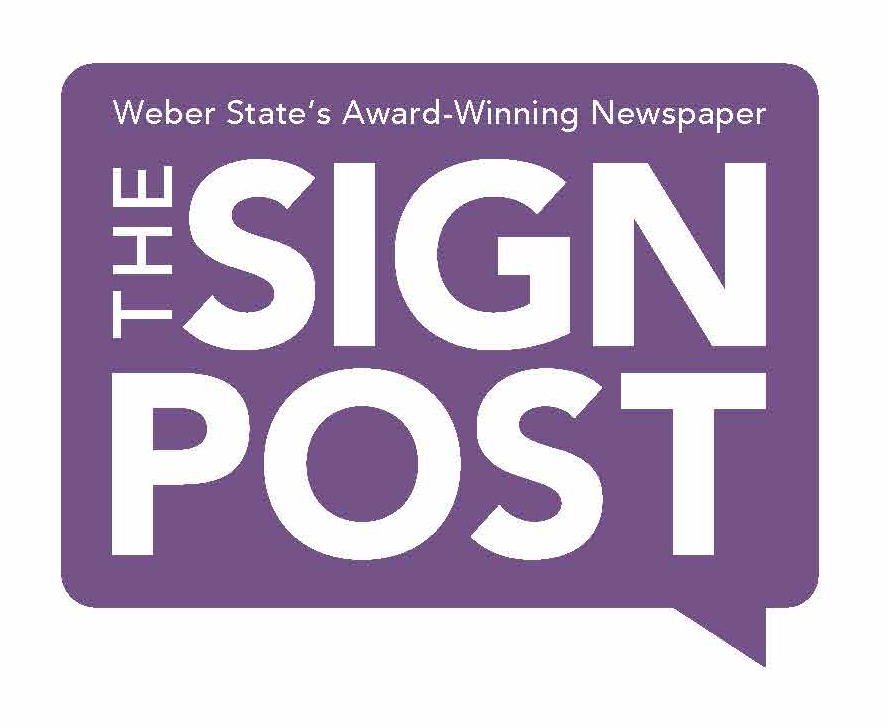
Adolph Yonkee, a geoscience instructor at Weber State University, recently had an article published in the academic journal Science Direct.
The paper, written in collaboration with Arlo Brandon Weil of Bryn Mawr College, is titled “Tectonic evolution of the Sevier and Laramide belts within the North American Cordillera orogenic system” and tells of rocky formations shucking and jiving over a few million years in and around our state.
While Science Direct is a great source of information, the reality is that most students cannot afford a subscription to the journal. Instead of making students pay the fees for each academic article they access, the Stewart Library prepays for large subscriptions to dozens of academic journals.
However, when a professor performs research that is university funded, the question of whether their final papers should be publicly available is raised. A supporter of open access would answer this question with an affirming yes.
According to Public Library of Science, open access can allow the authors of articles and research papers to apply the creative commons licenses to their work without universities paying fees for subscriptions. Kathy Payne, head of Reference and Information Services at the library, said that this can be described as “the wolf in grandma’s nightie.”
Payne explains that open access makes sense if professors and researchers are funded by universities and they make their work available in a free database. But the verification, rigor and publishing in a peer-reviewed journal offers professors different benefits, such as being granted tenure.
Kayla Womeldorff is a registered and clinical dietitian. Womeldorff explained that peer review is an important step in the scientific process.
“As a professional, I do not put much confidence in research that has not been peer-reviewed, as it is difficult or impossible to verify that the researchers used ethical research methods and reported accurate data,” Womeldorff said.
Womeldorff believes that research that isn’t subjected to the peer review process is “at best, a waste of resources since the scientific community at large places great value on the peer review process.”
The issue of deciding who pays is not even the hard part, according to Yonkee. The hard part lies in even getting your work out there. The process is arduous and Yonkee explains that after submission, an editor must find at least two or more qualified reviewers who make suggestions and editorial decisions.
Yonkee described that this process alone can taken several months, especially if graphics and charts are involved.
“It takes additional time,” Yonkee said. “And in the case of this paper that had 40 figures, there were challenges in formatting and transferring some graphics.”
After taking all this into account the professor then has to make the changes and approve formatting. In Yonkee’s case the wait was longer but not necessarily a bad thing.
“It was good as I was able to complete most of the revisions during the summer when I had more time,” Yonkee said.
When a journal like Science Direct owns the content it can charge what it wants and police it’s copyright to the fullest extent it wishes. Even still, open access can be costly. Payne said that open access through Elsevier is funded by several organizations. A full list can be seen on Elsevier’s open access website. Similarly to our earth’s crust, academic publishing is, according to Payne, in a state of “upheaval and turmoil.”








Theresa • Oct 21, 2015 at 9:39 am
The best review is Open Access. See even Chris Murphy’s article can be reviewed!
Jean Reid Norman • Oct 7, 2015 at 3:21 pm
I am the adviser of The Signpost, and this was Chris Murphy’s first article. This is a platform for learning journalism. Thank you for your observations. He is learning from them.
Graham Steel (@McDawg) • Oct 7, 2015 at 9:04 am
Thanks IPS. It is indeed his first article on The Signpost.
Graham Steel (@McDawg) • Oct 7, 2015 at 9:02 am
A truly awful, misleading, ignorant and uninformed article. I don’t even know where to start. Agree very much with Charles & Pedro in particular.
JPS • Oct 7, 2015 at 8:46 am
Looks like this is the author’s first published article for The Signpost. The Editor may want to take a close look at the fact checking process here…
Pedro Silva • Oct 7, 2015 at 2:42 am
This article is not merely ignorant: it is a complete mishmash of incongruous sentences, thrown in an haphazard way by someone who obviously does not know either the subject matter or how to find quotes by people who know anything about the subject. I would not be too surprised to learn that this job was composed by a nonsense-generating program like SCIGen.
Charles Oppenheim • Oct 7, 2015 at 1:26 am
Yes, a truly ignorant article. Someone should explain OA to the author and the academics who peddled such nonsense. I particularly love “most students cannot afford a subscription to Science Direct.” No kidding, Sherlock!
Christian • Oct 6, 2015 at 3:21 pm
and now, what’s the risk of Open Access? Open Access Journals like PLOS are indeed peer reviewed.
David Solomon • Oct 6, 2015 at 12:16 pm
Maybe I am missing something but Science Direct (www.sciencedirect.com) is the publisher Elsevier’s publishing platform which hosts thousands of journals, not a journal.